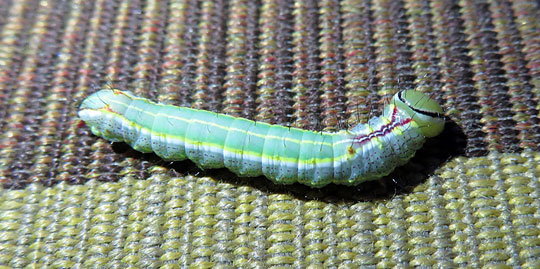One of the joys of living in western Virginia is taking advantage of the Great Outdoors. Most Mondays we join the "Monday Morning Hikers". Additionally, we frequently walk our own woods and the adjacent National Forest lands.
Flag Rock (August)
An easy hike in Bath County with great views at the top.
 |
View to the east with the Blue Ridge in the distance.
|
 |
| View to the west over Warm Springs and into West Virginia. |
 |
Looking north along the ridge of Warm Springs Mountain.
|
 |
Surprise! A nice-sized timber rattlesnake was sunning on the rocks. (Safely viewed from a distance!)
|
 |
A closer look at the head showing the classic pit viper triangular shape.
|
McAfee's Knob (September)
The most-photographed overlook on the Appalachian Trail. It had been 18 years since I'd last been up here, and the route is much better and very well maintained. Even on a weekday there were a lot of cars in the trailhead parking lot. (On weekends, just forget trying to get a parking spot.) Last time we went was on a Sunday in June 2002 and we had the Knob to ourselves. No such luck these days!
 |
Starting up the AT near the Catawba trailhead. On the way to the Knob we hiked the AT. It's a lot of up-and-down through the woods.
|
 |
View from the Knob. (I really should have taken a panorama - it is a 180°+ view.)
|
 |
| The classic McAfee's Knob photo. |
 |
| On the return trip, we followed the Fire Road instead. It pretty much follows the ridge, and there are a number of interesting boulders along the ridge top. |
 |
"Vintage" photo from June 2002. Yes, we were all younger then!
|
Hanging Rock Raptor Observatory (September)
It's becoming a September tradition. A trip to this former fire tower near Gap Mills, WV, is nearly guaranteed to feature at least a few hawks and/or eagles, especially during the fall migration, which peaks in mid-September. Today we only saw a few broad-winged hawks, one sharp-shinned hawk, a local red-tailed hawk, and a few ravens and turkey vultures.
 |
Temporarily unmasked for our group photo.
|
 |
Looking north(east) along Peters Mountain. Peters Mountain is one of the longest ridges in the Appalachians and provides excellent updrafts for migrating raptors. It is also the Eastern Divide (between the Atlantic Ocean & Mississipi River watersheds) and for most of its length the border between Virginia and West Virginia.
|
 |
Looking south(west) along Peters Mountain.
|
 |
| On a clear day, you can see for at least 50 miles (80 km). The 100 MW Beech Ridge Wind Farm is in Greenbrier County, WV. |




































